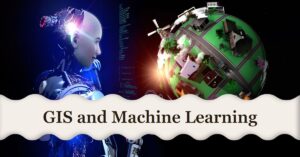Introduction to GIS
GIS (Geographic Information System) is an extremely powerful tool that has transformed the way we study, manage, and interpret geographical data. Whether you’re a specialist in the area or just curious about this technology, this article will provide you a thorough overview of GIS. We’ll go over all you need to know about GIS, from its definition and fundamental components to its uses, benefits, limitations, and future developments
What is GIS?
Geographic Information System is abbreviated as GIS. It is a system that captures, stores, manipulates, analyzes, and displays geographical or geographic data. In layman’s words, GIS enables us to comprehend and interpret information pertaining to specific areas on the Earth’s surface. It combines data from multiple sources, such as maps, satellite photos, and surveys, to generate important insights and allow for informed decision-making.
Key Components of GIS
GIS is made up of four major parts: spatial data, software, hardware, and people. Each component is critical to the operation of GIS:
1. Geographic Information
The foundation of GIS is spatial data. It contains information about the Earth’s geographic characteristics, such as points, lines, polygons, and raster images. This information can be gathered using surveys, remote sensing, GPS devices, and other means. Spatial data is kept in databases or files that may be accessed by GIS software.
2. Software
GIS software provides tools and features for managing, analyzing, and visualizing spatial data. ArcGIS, QGIS, and Google Earth are examples of popular GIS applications. Users can use these software programs to perform advanced spatial analysis, produce maps, and generate insightful reports.
3. Hardware
To execute the software efficiently, GIS requires sufficient hardware. Computers, servers, storage devices, GPS receivers, and other peripherals are all included. The hardware should meet the system requirements of the GIS software and support the geographic data processing and storage needs.
4. People
People are an essential component of GIS, as they interpret and make decisions based on the information provided by the system. GIS professionals, such as geographers, surveyors, and data analysts, play a vital role in data collection, analysis, and the overall GIS workflow.
Applications of GIS
GIS finds applications in various fields due to its versatility and ability to provide location-based insights. Some key applications include:
1. Environmental Management
Geographic information systems (GIS) assist environmental experts in monitoring and managing natural resources, tracking pollution levels, and analyzing the impact of human activities on ecosystems. It helps with land-use planning, conservation, and identifying vulnerable areas.
2. Urban Planning
GIS is used by urban planners to examine population density, infrastructure, and land use trends. It aids in the design of efficient transportation systems, the identification of ideal places for new developments, and the promotion of sustainable urban growth.
3. Emergency Management
GIS is critical in organizing response operations during emergencies or natural disasters. It aids in the identification of high-risk locations, the management of evacuation routes, and the assessment of the impact of catastrophes on infrastructure and communities. GIS can also help with resource allocation and catastrophe recovery.
4. Agriculture
GIS helps the agriculture sector by maximizing crop production, monitoring soil conditions, and regulating irrigation systems. It allows farmers to make educated judgments about planting patterns, fertilizer application, and insect management. GIS also aids in identifying locations with higher production potential and evaluating crop health.
5. Transportation
GIS assists transportation agencies in analyzing traffic patterns, optimizing routes, and planning infrastructure improvements. It allows for more effective logistical management, enhances public transportation systems, and aids in urban mobility planning. GIS is also used to map and monitor road conditions, identify accident hotspots, and optimize transportation networks.
How GIS Works
GIS works by utilizing a set of interconnected activities such as data gathering, management, analysis, and visualization. Here’s an explanation of how GIS works:
1. Data Collection
Data collection is an important step in GIS. It entails collecting spatial data from a variety of sources, including satellite photography, surveys, and GPS devices. After that, the data is analyzed and merged into the GIS database.
2. Data Management
GIS databases store and organize spatial data in a structured manner. This includes data storage, retrieval, and updating. GIS software provides tools to manage large datasets efficiently and ensure data integrity.
3. Data Analysis
GIS enables users to perform complex geographical analysis on the data they acquire. Overlaying numerous layers, undertaking proximity analysis, and constructing statistical models are examples of actions that can be performed as part of this investigation. Data analysis aids in the identification of patterns, correlations, and trends in spatial data.
4. Data Visualization
GIS’s capacity to show data on maps is one of its capabilities. Users can use GIS software to produce maps and visually portray spatial data. These maps can incorporate components such as points, lines, polygons, and thematic overlays, which aid in the interpretation and communication of data.
Benefits of GIS
GIS offers several benefits across different sectors. Some of the key advantages include:
1. Improved Decision-Making
GIS assists in making informed decisions by providing a geographic viewpoint. It enables users to evaluate complex data and show relationships, allowing for greater comprehension and planning.
2. Increased Efficiency
GIS automates numerous data collection, analysis, and visualization operations. This results in enhanced efficiency, as well as time and resource savings. The capacity to automate repeated procedures decreases the likelihood of errors.
3. Enhanced Communication
GIS maps and visualizations serve as powerful tools for communicating information effectively. They provide a common platform for stakeholders to understand and discuss spatial data, leading to improved collaboration and decision consensus.
4. Cost Savings
GIS helps optimize resource allocation and reduce costs. By analyzing data, organizations can identify areas where resources are underutilized or where investments can yield better returns.
Limitations of GIS
While GIS has numerous benefits, it also has certain limitations that need to be considered:
1. Data Quality
The accuracy and quality of input data have a considerable impact on the dependability of GIS analysis. Incorrect inferences and poor decision-making might result from inaccurate or outdated data.
2. Technical Complexity
GIS software can be difficult to use and may necessitate specific knowledge and training. For novices, the learning curve can be steep, and advanced analysis may necessitate competence in spatial statistics and programming.
3. Privacy Concerns
GIS often involves the use of sensitive data, such as individual addresses or demographic information. Ensuring data privacy and security is essential to maintaining public trust and adhering to legal and ethical standards.
Future Trends in GIS
GIS continues to evolve, and several trends are shaping its future. Some of the key trends include:
-
- Cloud-based GIS: The shift towards cloud computing allows easier access to GIS data and software, facilitating collaboration and scalability.
-
- Mobile GIS: With the increasing use of smartphones and tablets, GIS applications are becoming more mobile-friendly, enabling field data collection and real-time updates.
-
- Big Data and AI: GIS is integrating with big data analytics and artificial intelligence, enabling the processing and analysis of vast amounts of spatial information for more accurate insights.
-
- Internet of Things (IoT): GIS is incorporating data from IoT devices, such as sensors and drones, providing real-time information and enhancing spatial analysis capabilities.
-
- Augmented Reality (AR): AR technology is being integrated into GIS, allowing users to visualize and interact with spatial data in real-world environments.
Conclusion
In conclusion, GIS (Geographic Information System) is a powerful tool for analyzing, managing, and visualizing spatial data. GIS is used in a variety of disciplines, including environmental management, urban planning, emergency management, agriculture, and transportation, thanks to its main components of geographical data, software, hardware, and people. GIS improves decision-making, boosts efficiency, improves communication, and saves money by gathering, managing, analyzing, and displaying data. It does, however, have limitations in terms of data quality, technical complexity, and privacy concerns. GIS’s future looks bright, with cloud-based GIS, mobile GIS, big data, AI, IoT, and augmented reality impacting its advancements.
FAQs (Frequently Asked Questions)
Q1: Is GIS only used for mapping and creating visualizations?
No, GIS is much more than that. While it excels in mapping and visualizations, it also enables data analysis, spatial modeling, and decision-making support.
Q2: Can I use GIS without specialized training?
Basic GIS tasks can be performed with some training, but to fully utilize the capabilities of GIS and conduct advanced analysis, specialized training is beneficial.
Q3: Are there free GIS software options available?
Yes, there are free and open-source GIS software options, such as QGIS and GRASS GIS, that provide robust functionality without the need for licensing fees.
Q4: Can GIS be used for real-time tracking?
Yes, GIS can integrate real-time data feeds and enable real-time tracking of various phenomena, such as vehicle movements or weather patterns.
Q5: Are there career opportunities in GIS?
Yes, the demand for GIS professionals is growing in various industries, including environmental consulting, urban planning, government agencies, and technology companies.



